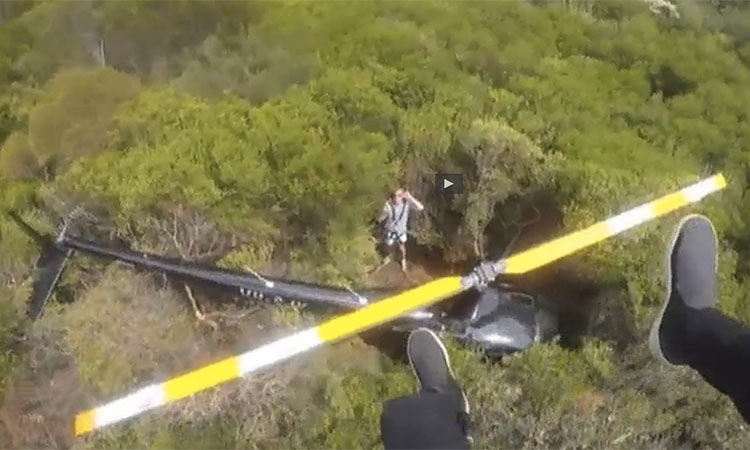
The Australian Transport Safety Bureau (ATSB) has published its final report into the safe forced landing of Robinson R44 VH-SJK, which was swallowed up by thick scrub at Sydney’s Royal National Park at Bundeena 16km south of Sydney Airport on December 17 last year.
Having departed Sydney Airport for a private flight with a family of four on board, the R44 was flying at 500ft over water to Cape Banks on the north shore of Botany Bay before turning south to fly a coastal route over the water outside of controlled airspace.
When the helicopter was about 200-300m off the coast and climbing through 650ft, the pilot, Peter Butler, heard the low rotor RPM warning horn activate and immediately turned right towards the shore line. During the turn and when over land, the rotor RPM tachometer indicated a decay in RPM when he raised the collective.
Having identified a landing site, Butler lowered the collective to enter an autorotation from about 300ft above the ground at 70kt and landed the R44 with about 7-8kt forward speed using a standard autorotation flare and cushion technique with no injuries to his passengers or himself.
Landing upright in very dense scrub with the engine and rotor still turning, Butler shut down the helicopter and used a mobile phone to call rescue services.
All four were winched out by the Westpac Life Saver Rescue Helicopter Service.
A post-recovery maintenance inspection was conducted, which included a visual inspection and ground run of the helicopter. No fault was found with the engine, drive system or flight controls.
The ATSB’s report concluded “the low rotor RPM was probably the result of a reduction in power input to the rotor from the engine, but the fault could not be reproduced during post-recovery tests.”
In its safety message section of the report, the ATSB said the lesson learned from this emergency was the importance of training and professional development.
“Although [the pilot] only used their helicopter for private flights, [he] trained for a commercial helicopter licence to improve their knowledge and skill in handling their helicopter,” said the ATSB report.
“[He] did not believe [he] could have flown a successful emergency landing without [his] previous recurrent proficiency training in practice autorotations.”
On the day of the incident, Butler told the ABC that the training required to obtain his pilot’s licence became vital when he realised there was an emergency.
“You train and train for these things before CASA will give you a licence and I’m glad they make us do it,” said Butler.
”This is the first time in a long time that I’ve had any problems and I was very glad I had the training to know what to do. You don’t get much warning.”
The full report is available on the ATSB’s website.











